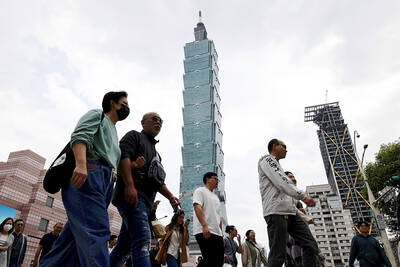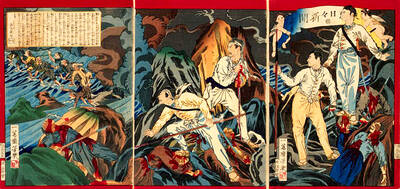Though early 2002 hasn't offered much in terms of grown-up entertainment, it
has been gangbusters for the kids. For the next few weeks the trend
continues with the Russian Royal Clown Family, a Russian touring group that
will visit at least 16 different cities in Taiwan (including venues in
Nantou County and Penghu) between now and Feb. 4.
The group consists of eight performers, including both men and women, who
have long cultivated their talents in Moscow's circus schools and other
Russian academies for the performing arts.
In Russia, the ensemble has won awards for its innovations in clowning, most
of which bring new elements into the old standards. So of course there will
be balloons, juggling, ventriloquism, stilts and magic, but the stunts will
be mixed up with new ideas; the stilts performance involves boxing, for
example. Other segments of the 100-minute long performance will involve
narratives, mini-musicals and short plays, like the Pianist and the Mouse
and Cowboy.
The Russian Royal Clown Family will perform tonight in the Chungli Arts Hall
and tomorrow night in Hsinchu's Performing Arts Hall. The troupe comes to
Taipei's Sun Yat Sen Memorial Hall this Sunday afternoon and then moves to
Taichung's Chungshan Hall on Jan. 29 and to Kaohsiung's Chihteh Hall on Feb.
1. Evening performances are at 7:30pm and matinees are at 2:30pm. For other
times and locations check: http://www.ticket.com.tw. Tickets cost between
NT$200 and $800.

In the March 9 edition of the Taipei Times a piece by Ninon Godefroy ran with the headine “The quiet, gentle rhythm of Taiwan.” It started with the line “Taiwan is a small, humble place. There is no Eiffel Tower, no pyramids — no singular attraction that draws the world’s attention.” I laughed out loud at that. This was out of no disrespect for the author or the piece, which made some interesting analogies and good points about how both Din Tai Fung’s and Taiwan Semiconductor Manufacturing Co’s (TSMC, 台積電) meticulous attention to detail and quality are not quite up to

April 21 to April 27 Hsieh Er’s (謝娥) political fortunes were rising fast after she got out of jail and joined the Chinese Nationalist Party (KMT) in December 1945. Not only did she hold key positions in various committees, she was elected the only woman on the Taipei City Council and headed to Nanjing in 1946 as the sole Taiwanese female representative to the National Constituent Assembly. With the support of first lady Soong May-ling (宋美齡), she started the Taipei Women’s Association and Taiwan Provincial Women’s Association, where she

Chinese Nationalist Party (KMT) Chairman Eric Chu (朱立倫) hatched a bold plan to charge forward and seize the initiative when he held a protest in front of the Taipei City Prosecutors’ Office. Though risky, because illegal, its success would help tackle at least six problems facing both himself and the KMT. What he did not see coming was Taipei Mayor Chiang Wan-an (將萬安) tripping him up out of the gate. In spite of Chu being the most consequential and successful KMT chairman since the early 2010s — arguably saving the party from financial ruin and restoring its electoral viability —

It is one of the more remarkable facts of Taiwan history that it was never occupied or claimed by any of the numerous kingdoms of southern China — Han or otherwise — that lay just across the water from it. None of their brilliant ministers ever discovered that Taiwan was a “core interest” of the state whose annexation was “inevitable.” As Paul Kua notes in an excellent monograph laying out how the Portuguese gave Taiwan the name “Formosa,” the first Europeans to express an interest in occupying Taiwan were the Spanish. Tonio Andrade in his seminal work, How Taiwan Became Chinese,